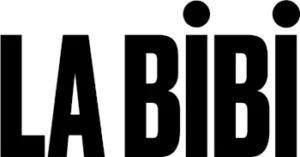Tommi Grönlund and Petteri Nisunen were central to the Nordic 90’s generation. Their retrospective at Kunsthalle Helsinki is consistent, playful and surprisingly universal.
By Maria Hirvi-Ijäs 28.02.17 Uncategorized
Tommi Grönlund (b. 1967) and Petteri Nisunen (b. 1962) were central to the Nordic 90’s generation, and have now worked together as an artist duo for almost 25 years. That in itself is remarkable, and it has proved to be a fruitful collaborative practice with an exceedingly consistent and versatile production.
Kunsthalle Helsinki is now showing a retrospective of their work for the last 20 years, presenting around twenty works that collectively are called Grey Area. The title can be said to refer to a grey zone between architecture, installation and sound art, yet it is about the relation between physics, technology and construction as well. Further relations can be established between immateriality, invisibility and universality, or wave lengths, vibrations and viscosity.
The exhibition, which has been produced after an invitation from The Finnish Art Society, is one of the most important this year in Helsinki. It is an immense project that has been able to produce large-scale installations for an overview intended to be critically examined. Several works have been shown only once, and never in Finland. The significance of the exhibition is increased by a thorough catalog of documentations.
The exhibition spaces have a minimalist aesthetic owing to their own functionalist architecture, which feels logical and domesticated in relation to the colorless and metallic installations. The artistic approach is based on the laws of physics with regard to gravity, movement, stillness, light signals and sound waves. In many cases, the works play on scale. In a smaller format they could have been exhibited at museums of technology or science centers as examples of “how things work”.

And sure, it is fascinating to watch the movement in the sizeable work Orbita from 2005, for example. We can see how motorized changes of the track keeps the big ball rolling. Or in Spring Field (2012), which becomes a spatial string instrument through the rhythmically recurring movements of small engines on the floor. The ingenuity recurs in the massive Antigravity Model (2005), which is kept in motion by the precision of weights placed inside the large concentric shapes. Most audience friendly is perhaps Unstable Matter (2013), a table top filled with metal marbles that tilts from side to side and shifts direction just before the balls roll over the edge.
Grönlund and Nisunen’s strength has often been taking space into account with their site specific installations. Usually what follows is a charged encounter between the viewer and the work, a connection that encompasses spatial tension and careful architectural solutions, formally and aesthetically as well as with regard to content.
What is perplexing about this exhibition is the amount of art works that the artists have chosen to install. It is as if the desire to show as much as possible has taken over. And the works are lessened by spatial compromises. The artists have chosen not to work with a curator and to be in charge of selection and installation themselves. It would possibly have benefited the exhibition to have an outside point of view. I was missing a curator that could have made edits and gone into dialogue with the artists about the material.

As a totality, however, the exhibition has much to offer. A highlight is the near classic work by Grönlund & Nisunen, the large Ultra Sound installation, which was shown for the first time at Manifesta 1 in Rotterdam 1996. In this work high frequency tones meet between two parabolic reflectors, and at a certain point the visitor is attacked by both light waves and sound waves that are otherwise imperceptible. Another highlight is Liquid Diagram (2009), where all the dimensions of the laboratory appear in an aesthetic play between the reactions of water and heat.
Many remember Grönlund & Nisunen as initiating curators of the Nordic Pavilion in Venice 2001. They created the totality of The North is Protected and invited Leif Elggren, Carl Michael von Hausswolff and Anders Tomren to a common audio-spatial gesamtkunstwerk. Today the title is inexorably read through the restricted migration policy, and the re-constructed part of the work that is exhibited now, Wire Installation, with its moving wires as far-reaching obstacles, charges the kinetic formations with associations to the anxiety of impenetrability.
The exhibition logically obtained yet another dimension, when it was used as a stage for a live concert by Carl Michael von Hausswolff, with a performance by Leif Elggren och Kent Tankred. The audience was brought into a kernel of physical electro-aesthetics, a breath of experiments without end that span over a generation.
The artistic production of Grönlund & Nisunen is unusual not least because of its timeless feeling, and it appears surprisingly general and universal, without imposing a relational or utopian interpretation on the audience. This is a play with the matter-of-fact, a game with the physical that simply exists, yet needs a form and a mode of visibility to be apprehended.
Source: https://kunstkritikk.com/







